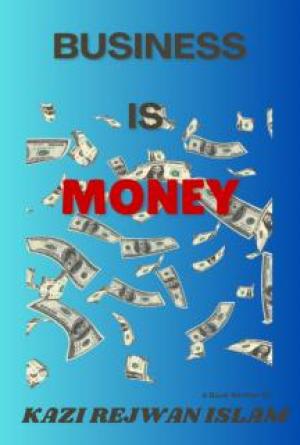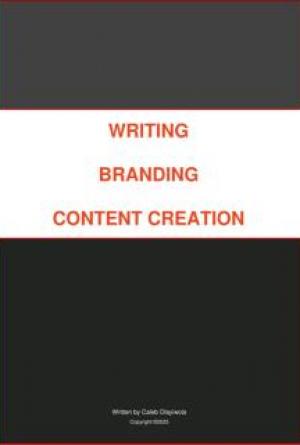Hiring…For A Perfect Fit
by Kathi Graham-Leviss © 2001
www.xbcoaching.com
An e-book for those leaders responsible for hiring and placing new employees effectively within the organization.
Introduction
In today’s ever-volatile workplace, we see an increasing need to hire and place new employees with greater effectiveness than before. There are no longer time or budget allowances that give us the flexibility to interview and hire other employees if the first person does not work out as planned. What this means is our plan must work right the first time.
What that would entail is understanding how the potential employee thinks, acts, is motivated and functions under stress. An impossible task? No!
It begins with talent. Obviously, you want to hire (and retain) those who bring the most and best talent to your team. Here you will find the information and tools you need in order to hire those talented individuals who are also behaviorally and characteristically a “perfect fit” with your organization.
With the information contained in this e-book, you will have the tools to hire employees to fill some of the most common positions in your organization. You will be able to do so effectively, with greater assurance that the employee will function well in his/her new role, and with a better understanding of that employee’s loyalty/longevity to the company.
Through the use of my four-step process; the DISC Behavioral Model; and the Personalities, Interests, Attitudes and Values profile; we will examine ways to perform enlightening interviews with tremendous results.
XB Coaching, Inc. offers both of these assessments (along with dozens of others) at
www.xbcoaching.com.
Table of Contents
Chapter One
An Overview of the DISC Model
Chapter Two
An Overview of the PIAV Model
Chapter Three
The 4-Step Process For Perfect Hiring
Chapter Four
Hiring Customer Service RepresentativesThat Are A Perfect Fit
Chapter Five
Hiring Sales RepresentativesThat Are A Perfect Fit
Chapter Six
Hiring Sales Managers That Are A Perfect Fit
Chapter Seven
Hiring Department Managers That Are A Perfect Fit
Chapter Eight
Hiring Executives That Are A Perfect Fit
Chapter One - An Overview of the DISC Model
The DISC Behavioral Model is a measurable tool that helps to define observed behavior. What exactly does that mean? It provides a way for you to assess the various ways people behave under certain circumstances, their motivators, their most natural attributes, their behavior in the work environment, and their preferred communication styles.
All this information can be used to create a “best fit” for employees who interview for positions at your company.
DISC is an acronym that stands for Dominance, Influence, Steadiness and Compliance. These are the four “core” behaviors that all people can be categorized by. There are – by all means – many combinations of the four styles, and that is what makes us all unique.
Each behavioral type is comprised of all four styles, with one being the “core” style which displays the predominant behavior.
By defining which style(s) your applicants possess, you will be better able to make that perfect fit.
Let’s take a few moments to briefly review each style and some characteristics of it. With this information, you will be able to implement the suggestions for hiring made in each chapter within this e-book.
Dominance – Individuals who show a high Dominance style are those that tend to process quickly and are focused on tasks. These individuals tend to be results-oriented, focused on challenge and power, and like to make decisions quickly with confidence. They are the team members who you know will get the job done.
Those who fall into the Dominance category are most likely managers and corporate officers. Some descriptors of this style include: driving, demanding, aggressive, pioneering and competitive. They are goal driven and enjoy a personal challenge.
When communicating with this style observe the following:
• Be direct, brief and to the point.
• Focus on the task and stick to business.
• Take a results-oriented, logical approach.
• Identify opportunities or challenges.
• Provide a win/win situation.
• Do not touch. Keep your distance.
When you receive communication from someone who is high in Dominance, it could appear short, undetailed, overpowering, intimidating, insensitive to feelings, or lacking in patience. You may need to ask for additional information as Dominance types often communicate in short bursts.
Some contributions Dominance styles make to the team are:
• solving problems
• driving for results
• positive
• powerful and authoritative
Some limitations to be wary of with this style are:
• overstepping boundaries
• use of fear as a motivator
• lack of listening skills
• lack of tact
• unhappy with “routine” work
• over delegates, under instructs
Influence – Individuals who show a high influence style are those who tend to process quickly and are focused on people. They are the team members who keep things exciting and keep everyone motivated. Recognition, relationships, and freedom from details will likely motivate them.
The primary corporate vocations for those high in Influence are sales and customer service. Charismatic, inspiring, optimistic, outgoing and animated describe these types. They are driven by their desire to socialize with people.
Those who are high in Influence prefer the following when being communicated with:
• Allow time to socialize.
• Lighten up and don’t be afraid to have fun.
• Ask for feelings and opinions.
• Involve them in brainstorming.
They have a need to verbalize. They also lack attention to detail, appear superficial, have poor follow-through and can appear manipulative. Influencers most likely will talk “around” a subject until they are able to make their point. You may find yourself exercising a lot of patience with Influencers.
Some contributions this style brings to the team are:
• social and verbal aggressiveness
• optimism
• good persuasion skills
• vision of the big picture
• people-oriented
• team-oriented
Some limitations to be wary of with this style are:
• impulsiveness
• unrealistic in appraising people
• lack of attention to detail
• disorganized
Steadiness – Individuals who show a high Steadiness style are those that tend to process more methodically and who are focused on people. These individuals tend to be loyal, cooperative, calm and methodical in how they deal with life. They are the team members who make sure that everyone on the team is doing OK. Security, stability, and sincere appreciation will likely motivate them.
Those whose core communication style is Steadiness will most likely be found in positions such as trainer, marketer or administrative assistant. They are often described as: adaptable, systematic, unhurried, predictable and consistent. Their needs-driven behavior is accommodation, and they also possess a need to be of help to others.
When you communicate with someone high in Steadiness, you’ll want to:
• Be patient.
• Draw out their opinion.
• Provide a logical approach to the facts.
• Relax and allow time for discussion.
• Show how a solution would benefit them.
• Clearly define all areas.
• Involve them in the planning stage.
When you receive communication from someone with a core Steadiness style, it may appear non-emotional, indecisive, too direct and lacking in assertiveness. It may also seem as though they are providing an enormous amount of detail.
Some contributions this style brings to the team are:
• loyal to those they identify with
• good listener
• patient and empathetic
• likes a team environment
• long service is deemed important
Some limitations to be wary of with this style are:
• tends to get into a “rut”
• resists change
• holds a grudge
• lacks a projected sense of urgency
• low risk takers
Compliance – Individuals who show a high Compliance style are those that tend to process more methodically and are focused on tasks. These individuals tend to be analytical, precise, and value quality and accuracy on a project. They are the team members who keep standards high and pay attention to details. Professional standards, defined expectations, and a quality focus will likely motivate them.
People high in Compliance are often found in the vocations of accounting and engineering. These are the “rule followers.” They can be depicted as: painstaking, wary, meticulous, qualityconscious and perfectionist. Their two primary driving forces are following the rules and complying with their own high standards.
When you communicate with the Compliance style, it is necessary to:
• Use data and facts.
• Examine the argument from all sides.
• Keep on the task, don’t socialize.
• Disagree with the facts, not the person.
• Focus on quality.
• Avoid “new” solutions and stick with proven ideas.
• Do not touch.
• Allow them time to think.
When receiving information from someone high in Compliance, it could seem “excessive.” They tend to appear as a perfectionist, aloof, too rule focused, critical and slow to proceed. Bear with them. They must process the information before being able to communicate their ideas.
Some contributions this style brings to the team are:
• critical thinker
• high standards
• well disciplined
• accurate
Some limitations to be wary of with this style are:
• hesitates to act without precedent
• bound by procedures
• does not take risks
• does not verbalize feelings
• avoids controversy
With these descriptions in mind, let’s move forward and discover which style (or combination of styles) works best with a variety of positions.
Click here for additional help with the DISC Behavioral Model
Chapter Two - An Overview of the PIAV Model
With an awareness of an employee’s personal value system and how it shapes his/her behavior, you can develop new strategies to ensure that the new employee gets those essential elements he or she needs to perform well. You can also put his/her manager in an excellent position to motivate this employee toward top performance. You can reduce the risk of conflict and enhance an environment of cooperation.
The Six Attitudes Are: Theoretical, Utilitarian, Aesthetic, Social, Individualistic and Traditional. Each one holds its own set of goals, focuses and behaviors. By determining which “attitude type” your prospective employee has, you will break down barriers that might otherwise cause conflict and job dissatisfaction.
Theoretical Attitude
Goal: To discover truth and knowledge. They save seminar flyers and want to go to all of them.
Focus:
• Discovery of Truth and Knowledge
• Solving a problem
• Hard, cold facts and research
Value to the Team/Passions:
• Solving problems
• Objectivity in all areas
• Identifying, differentiating, generalizing, systemizing
• Pursuit of knowledge, identifying truth and untruth
• Knowledge for sake of knowing
Basic Attitude:
I will use my cognitive ability to understand, discover, and systemize the truth.
Tendency Under Stress:
• Pursuit of knowledge is so primary that practical matters are neglected or ignored (home, family, children, money)
• Discovery of truth may be placed higher than personal safety
• Inability to know, learn or discover
• Emotional, subjective experience with no rational justification
Utilitarian Attitude
Goal: To discover utility and what is useful or practical. Show them a forest and they see houses; to them the sun becomes solar energy.
Focus:
• Return on an investment of time, energy or money
Value to the Team/Passions:
• Practicality in all areas of life
• Utilizing resources to accomplish results
• Gaining a measurable return on all investments
• Creative application of resources
• Producing goods, materials, services and marketing them for economic gain
• Capitalism
Basic Attitude:
Every investment I make will have a greater return in time and resources.
Tendency Under Stress:
• Workaholic
• Self-preservation; little or no concern for others
• Wasted resources, time materials and/or services
• Investments with inadequate or no return
Aesthetic Attitude
Goal: To discover experience, impression and expressions. They see the sunset and want to paint it or take a picture of it.
Focus:
• Subject experience of self and others; feelings
Value to the Team/Passions:
• Appreciation and enjoyment of form, harmony and beauty
• Enjoyment of all senses
• Subjective experience
• Understanding feelings of self and others
• Self-realization, self-fulfillment and self-actualization
• Creative expression
• Appreciation of all impressions
Basic Attitude:
I will enjoy and experience the beauty around me and allow it to mold me into all I can be.
Tendency Under Stress:
• Functioning outside of reality
• Disturbance of form, beauty and harmony in self, others and environment
• Objective truth
Social Attitude
Goal: To eliminate hate and conflict. They get the address labels in the mail, and they send a small donation.
Focus:
• How your ideas will benefit others
Value to the Team/Passions:
• Investing self in others
• Selflessness
• Generosity of time, talents and resources
• Seeing and developing potential in others
• Champion of worthy causes
Basic Attitude:
I will invest myself, time and resources in helping others to achieve their potential.
Tendency Under Stress:
• Primary focus is on others, can be injurious to self
• Over-zealousness for a cause may lead to harmful behavior to self and others
• Individualism
• Decisions or actions which are insensitive to people
Individualistic Attitude
Goal: To assert self and have his/her causes be victorious. They gravitate toward leadership roles - major “networker.”
Focus:
• How presentation will increase power
• Advancement of person’s position or company’s position
Value to the Team/Passions:
• Leading others
• Achieving position
• Advancing position (forming strategic alliances)
• Attaining and using power to accomplish purpose
• Planning and carrying out a winning strategy
• Tactics and positioning
Basic Attitude:
I will achieve the highest position and wield the greatest power or influence.
Tendency Under Stress:
• Position of self may be more important than others
• Absolute power corrupts
• Actual or perceived threatening, diminishing or loss of power or position
• Inability to advance, lack of opportunity for individual advancement
Traditional Attitude
Goal: To search for a system for living. They are very clear about what they believe to be rules to live by.
Focus:
• On the meaning of life, the totality
• Bring in the spiritual element
• Show how this will move us all toward the ideal
Value to the Team/Passions:
• Understanding the totality of life
• Finding meaning of life in a system
• Pursuit of the divine in life
• Following and dying for a cause
• Living consistently according to a “closed” book
• Converting others to their system
Basic Attitude:
I will pursue a system for living.
Tendency Under Stress:
• May break the law by following their “book” (higher)
• Sacrifice of self for beliefs, willing to die for them
• Closed mindedness/judgmental of other viewpoints
• Opposition to others beliefs
Click here for additional help with PIAV assessments.
Chapter Three -The 4-Step Process For Perfect Hiring
Ninety percent of all hiring decisions are made based on an interview. Yet, traditional interviewing methods are effective less than 1 out of 5 times. Poor hiring decisions cause increased turnover rates that relate to a reduction in overall company profits – but you can break out of the pattern that lends itself to wasted time and money.
Many managers have a tendency to hire employees based on skills and fire them because of attitude. Yet, these mangers face a challenge in defining attitude relative to performance. Attitude can only be seen through behavior. These challenges can be overcome. You can implement this simple 4-step process and increase your “good hire” ratio and improve employee longevity along with bottom line profits.
A multitude of mistakes are made throughout the interviewing and screening process. The most common hiring mistakes include:
• untrained interviewers
• selection decisions being made too quickly
• emotional decisions being made based on chemistry or style
• too much emphasis being placed on education and technical (hard) skills and not enough on thinking and relationship (soft) skills
XB Coaching offers a behavior screening and recruiting process that shows organizations how to
XB Coaching offers a behavior screening and recruiting process that shows organizations how to step process is designed to show where prospective employees would best fit in your corporation, thus allowing you to avoid costly hiring mistakes.
Step 1 - The Work Environment Assessment
The first step in the process is to determine the behaviors necessary for the position. The work environment is used to create a behavioral style that best matches the job description. Every job that requires human effort has a work environment. That work environment can be best described in terms of behavior. When you match the behavioral style of the person to the job, the person will be better able to perform the job requirements. If the behavior of the person does not match the job, there will be tension between the job and the person’s natural behavior, which may affect longevity and work performance.
Several elements of the behavioral styles mentioned in Chapter One will help to direct you in your quest to match behavior with the job responsibilities. Keep the following in mind as we look at various occupations in later chapters.
Dominance - how a person responds to problems and challenges Influence - how a person influences others
Steadiness - how a person responds to the pace of their environment Compliance - how a person responds to rules and proceduresset by others
Click here for additional help with work environment assessments.
Step 2 - Defining the Core Competencies of The Position
The next step is to determine the core competencies or the “soft skills” required for the position. Collect data from 5 to 10 company individuals who understand the position well. Clarity, understanding and consensus on what competencies are required for superior performance are essential for accurate behavioral interviewing. Your goal is to create a list of competencies that are required for this position and to match them with the behavioral style of each applicant. Research indicates that specific groups of competencies are required to produce superior performance in most positions. From your list, you can develop interview questions. The questions should provide you with a framework for comparing candidate competency strengths with the competency requirements of the position.
Click here for additional help with defining the competencies of the position.
Step 3 - Personal Interests, Attitudes and Values Assessment
Once a phone interview has been completed utilizing the behavioral interview questions, you can determine if the candidate has the skills that are necessary for the position. If the candidate is qualified, he/she should then be reviewed in relation to attitudes and values.
Knowledge of an individual’s attitudes helps to explain why they do things. A review of an individual’s experiences, references, education and training helps in assessing what they can do. Behavioral assessments can provide you will excellent help in defining how a person behaves and performs in the work environment. The information from Chapter Two can help you assess the applicant’s PIAV.
Click here for additional help with defining personal interests, attitudes and values.
Step 4 - DISC Behavioral Model
Behavioral research suggests that the most effective people are those who understand themselves (both their strengths and weaknesses) so they can develop strategies to meet the demands of their work environment. (See Chapter One.)
A person’s behavior is a necessary and integral part of who they are. Much of our behavior comes from “nature” (inherent), and much comes from “nurture” (our upbringing). This combination is the universal language of “how we act,” or our observable human behavior.
The information provided by the DISC Behavioral Model shows you four dimensions of normal behavior. They are:
• how a person responds to problems and challenges
• how a person responds to the pace of their environment
• how a person responds to rules and procedures set by others
• how a person may influence others to their point of view
Understanding these four dimensions enables you to make informed decisions and select employees who offer the best fit for the organization.
Click here for additional help with determining the core behavioral style of the applicant.
Through the use of the 4 steps that comprise the interviewing and screening process, your company can easily select new hires that will:
• serve their team well
• experience a high level of job satisfaction
• exhibit company loyalty
• offer excellent job performance
After all… when your employees do well, the organization as a whole does well.
Chapter Four
Hiring Customer Service Representatives That Are A Perfect Fit © Kathi Graham-Leviss
http://www.xbcoaching.com
Have you ever phoned a customer service department only to receive an attitude rather than help? Not a pleasant experience! It is quite obvious that the person on the other end of the phone is not pleased







